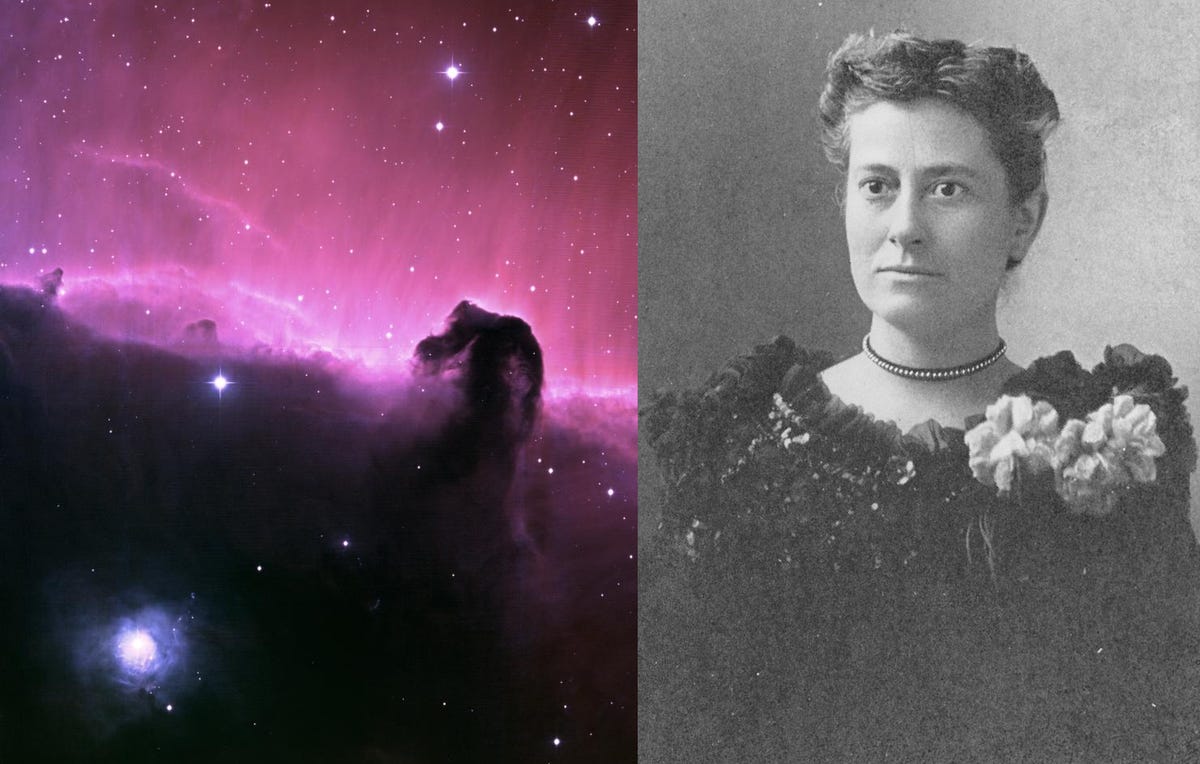The Harvard Computers who changed astronomy (pictures)
These four women are little known, but their contributions to astronomy are still in use over a century later.

Williamina Fleming
Williamina Fleming (1857-1911) was the first of Harvard College Observatory director Edward Charles Pickering's computers, formerly his maid. She was, however, as educated as a woman of her time was usually allowed to be, having worked as a teacher previously.
During her time as a Harvard Computer, she developed a system of classifying stars by using letters to designate how much hydrogen could be seen in its spectra. Her role was to catalogue the photographic plates, taken by Pickering with new equipment purchased for the observatory, and her system became known as the Pickering-Fleming system. She also came to supervise the Harvard Computers, interviewing and hiring new members, and was responsible for editing the observatory's papers.
In 1898, she was officially recognised as Harvard staff, and given the title of Curator of Astronomical Photographs, and in 1906 she became an honorary member of the prestigious Royal Astronomical Society of London, the fifth woman and first American woman to be so honoured (women weren't allowed to be full members).
In the course of her career, she personally catalogued over 10,000 stars. She discovered 10 novae, 52 nebulae (one of which was the famous Horsehead Nebula in 1888), and 310 variable stars. In 1910, she made one final dazzling discovery: white dwarf stars. She died in of pneumonia at the age of 46.
Annie Jump Cannon
Annie Jump Cannon (1863-1941) was something of a rarity. She attended Wellesley College, studying under Sarah Frances Whiting, one of America's first female physicists, excelling at maths and graduating with a physics degree in 1884.
Alas for Cannon, jobs for women of her education were not exactly abundant. So she moved back home to Delaware and concentrated on her photography. In 1893, she contracted scarlet fever, which left her nearly deaf; in 1894, her mother died, which left her in dire straits. She wrote to Whiting, who took her on as a junior physics teacher. From there, she was hired by Pickering in 1896 as one of his computers.
Cannon was a star-classifying prodigy. She could classify three stars a minute based on their spectra, and, using a magnifying glass, down to the ninth order of magnitude. Accounts vary, but she classified somewhere between 250,000 and 500,000 stars.
Building on Fleming's work classifying stars based on their spectra, Cannon devised a system of classifying stars based on their temperatures. Her system is called the Harvard Classification Scheme, and it is still in use today. She took over the role of Curator on Fleming's death in 1911, and in 1938 was given the position of William C Bond Astronomer. She was also the first female recipient of an honorary doctorate from Oxford, and the first female member of the American Astronomical Society.
In her lifetime, she discovered discovered 300 variable stars, five novae, and one spectroscopic binary.
Antonia Maury
Antonia Maury (1866-1952) was another educated woman, graduating from Vassar College in 1887 with honours in physics, philosophy and astronomy. She was also the late astrophotographer Henry Draper's niece, so her father wrote to Pickering, who was continuing Draper's work, and secured Maury a position among the Harvard Computers in 1889.
Maury and Pickering did not get along. According to fellow computer Dorrit Hoffliet, Maury "was one of the most original thinkers of all the women Pickering employed; but instead of encouraging her attempts at interpreting observations, he was only irritated by her independence and departure from assigned and expected routine."
One of the areas on which the two butted heads was Maury's theory about stellar classification. Maury believed that spectral lines, as well as their absence or presence, was important. A normal line was a, a fuzzy line was b and a sharp line was c. This allowed for the luminosities of stars to be incorporated into their classification. However, Maury and Pickering quarreled over this addition to the system, and she left the observatory to continue her work on her own.
In 1897, she published her very own catalogue of over 600 stars using her classification system, but even this was wrought with difficulty. Pickering wanted to be credited as the author, but Maury demanded that it be published under her own name. Her stubbornness was worthwhile. In the 28th volume of the Harvard Annals, she became the very first woman with her name on the cover.
Her classification system later became vital to the work of Danish astronomer Ejnar Hertzsprung, who co-developed the Hertzsprung-Russell diagram.
Henrietta Swan Leavitt
Henrietta Swan Leavitt (1868-1921) was an 1892 graduate of Radcliffe College, where she received a broad education that included philosophy, fine arts, Greek, geometry and, of course, astronomy. She was, by all accounts, a quiet and serious-minded woman, so when she went to work for Edward Charles Pickering in 1893, she threw herself into her work diligently.
She was assigned the study of variable stars, the light of which brightens and dims, constantly changing. She identified over 1,200 variable stars, and studied many more, and over the course of this work made an extremely important discovery. To wit, the brightness of a variable star directly correlates to the length of time between dimming and brightening.
This was groundbreaking. For the first time, by measuring the period of a variable star, astronomers could calculate how bright that star should be, and therefore determine how far it was from Earth. She published her research in 1908.
Ejnar Hertzsprung then used this to calculate the distances to several variable stars in the Milky Way galaxy, demonstrating that Leavitt's theory was correct. Moreover, the theory proved to be vital for calculating the size of the universe. By locating variable stars in other galaxies, astronomers could determine their distance from the Milky Way.
Leavitt's life was cut tragically short by cancer at the age of 58.

